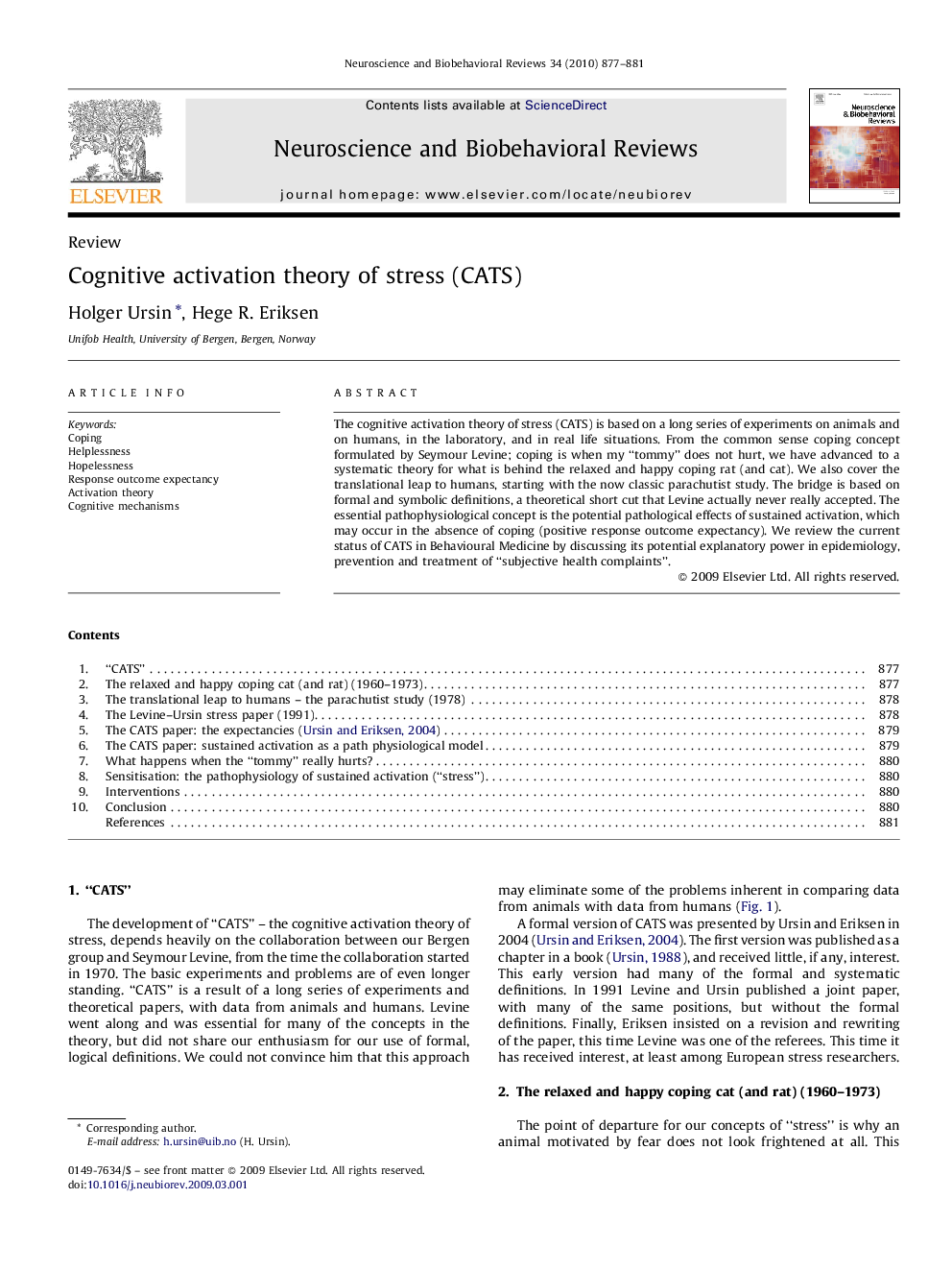| Article ID | Journal | Published Year | Pages | File Type |
|---|---|---|---|---|
| 937724 | Neuroscience & Biobehavioral Reviews | 2010 | 5 Pages |
The cognitive activation theory of stress (CATS) is based on a long series of experiments on animals and on humans, in the laboratory, and in real life situations. From the common sense coping concept formulated by Seymour Levine; coping is when my “tommy” does not hurt, we have advanced to a systematic theory for what is behind the relaxed and happy coping rat (and cat). We also cover the translational leap to humans, starting with the now classic parachutist study. The bridge is based on formal and symbolic definitions, a theoretical short cut that Levine actually never really accepted. The essential pathophysiological concept is the potential pathological effects of sustained activation, which may occur in the absence of coping (positive response outcome expectancy). We review the current status of CATS in Behavioural Medicine by discussing its potential explanatory power in epidemiology, prevention and treatment of “subjective health complaints”.
